If you’re like most coffee lovers, you probably dread cleaning your coffee pot. It’s a tedious task that takes time and feels like forever. But if you want to keep your coffee maker in good condition and make great coffee, it’s important to know how to clean a coffee maker without vinegar.
Many people use vinegar to clean their dirty coffee pots and remove tough stains from their coffee carafe, but other methods work just as well, and sometimes even better!
So, let’s talk about some of these coffee machine cleaning techniques and why they can be a better choice for you. The advantages of not cleaning your coffee maker with vinegar will also be discussed. Here are some great alternative methods for cleaning your coffee maker, if you’re looking for something with less of a strong smell or that doesn’t use harsh chemicals.
Is vinegar a good coffee pot cleaner?
Yes, vinegar works well to clean coffee pots.
One of the main components of vinegar is acetic acid, with small amounts of other chemicals. Inorganic salts, acetic acid is a weak acid, but it has the strength to dissolve mold and bacteria as well as break down mineral and residue deposits on surfaces.
Since this acid is the main component of vinegar, it makes vinegar a great choice for cleaning coffee pots. It will remove any mold or germs that may be growing in your coffee maker and is a typical cleaner as well as a natural cleaner. Vinegar also is easily reachable and cheap.
In one pinch, use apple cider vinegar or white vinegar. You may thoroughly clean your coffee maker by using the diluted solution that is made when vinegar and water are combined. Balsamic vinegar shouldn’t be used. There will only be more messes to clean up as a result.
The use of vinegar does have certain drawbacks, though. Vinegar can leave behind one rather strong smell, damage the coffee maker’s finish, and alter the flavor of the coffee. There are a few choices you may try if you’re seeking a more mild cleaning agent.
Why should you clean a coffee maker without vinegar?
When used often to clean your coffee maker, vinegar has a lot of drawbacks.
Despite being regarded as the ultimate cleaning solution, vinegar has a strong smell that might make it difficult to appreciate the rich flavor of the coffee.
You might need to use a lot of water and conduct many rinse sessions in order to get rid of this stink, which takes a lot of time and work. Also, vinegar is not as effective at removing grease. It destroys germs, but it takes many cycles to completely eliminate grease and oils.
The great news is that there are many other alternatives to vinegar that can be found around the house. You can now clean your coffee maker without using vinegar using everyday items from your home.
Here is a list of 7 simple methods you can use right now to quickly clean your coffee machine.
1. Baking Soda
When cleaning coffee pots, baking soda works great in place of vinegar. Baking soda is also a cheap natural disinfectant that is simple to locate and much simpler to clean up than vinegar.

Here’s how to use a baking soda solution to clean your drip coffee maker:
what you will need: Baking soda and warm water.
Step 1. Combine a cup of clean water with a quarter cup of baking soda in a bowl.
Step 2. Fill your coffee maker’s water tank with the solution.
Step 3. Run three to five brew cycles without adding coffee to the machine.
Step 4. Once the brew cycle is complete, rinse the coffee pot and wash it with dish soap and warm water.
2. Lemons
Lemons are another this other great vinegar alternative for cleaning coffee pots. Lemons, like vinegar, are naturally acidic, and citric acid aids in the breakdown of used cooking oil and coffee grounds.

If you’ve ever eaten sour candies, the white powder that coats them and gives them that wrinkly look on your face is citric acid.
Lemons contain bacterial properties as well, which can help kill any undesirable germs that may be growing in your machine. Lemon juice may also be used to clean coffee makers.
Here’s how to use a lemon solution to clean your coffee maker:
what you will need: Lemons, water.
Step 1. Split 2 lemons in half, and press the juice into a small bowl.
Step 2. One part pure lemon juice and one part water should be combined to create a lemon juice (citric acid) and water solution. Don’t put water into acid always pour acid into water. The reaction you really don’t want can be created by the wrong mix. It is not required to raise the juice’s concentration, although you may.
Step 3. Fresh water and the lemon juice combination should be added to the water reservoir of the coffee maker.
Step 4. Turn your coffee maker on and let it run its full cleaning cycle. Once more, for best results, we advise running it for three to five cycles. Check the water to see whether you can still taste the lemon after each brew cycle. if not, there is no need to continue running the loops.
Step 5. Once the cycle is complete, use a clean cloth to wipe down all surfaces.
3. Cream of tartar
The next method for cleaning coffee pots without vinegar is by using the cream of tartar. Most grocery stores sell tartaric acid in the powdered form known as cream of tartar. It is formed from the leftover winemaking sediment and has built-in antimicrobial qualities.
Here’s how to use cream of tartar to clean your coffee maker:
what you will need: Cream of tartar, water.
Step 1. fill the water tank of your coffee machine with water.
Step 2. In the reservoir, add three teaspoons of cream of tartar.
Step 3. Make sure the solution is fully dissolved in the water.
Step 4. Run the coffeemaker three to five times through its whole cycle.
Step 5. After every brewing cycle, clean the coffee maker with water and soap.
4. Hydrogen peroxide
A cup of hydrogen peroxide is an alternative, fairly cheap method for cleaning coffee machines without vinegar. A natural sterilizer that can be used to remove mold, germs, and fungus is hydrogen peroxide due to its disinfecting qualities. It’s also non-toxic, which makes it a good choice since, of course, you want to be able to safely drink from your coffee maker after cleaning it.

Here’s how to use hydrogen peroxide to clean your coffee maker:
what you will need: Hydrogen peroxide solution, and water.
Step 1. Run a complete cycle with only water first to clear out any leftovers from prior brews, then run the chemical through the machine.
Step 2. Add a cup of the mixture to the water supply.
Step 3. Fill the reservoir to the brim with normal water.
Step 4. Run the coffeemaker’s cycle all the way through.
Step 5. Rinse the coffee pot with soap and water to make sure the chemical doesn’t linger.
5. Vodka
Without a question, this is one of the most unusual substitutions for cleaning your coffee machine with vinegar.
However, you should be aware that vodka has almost no taste or odor, so you won’t need to waste time running many cleaning cycles in the end.
Step 1. Mix 25% alcohol with 75% water
Step 2. Put the solution in the container.
Step 3. Run a full cycle.
and that’s it. You can also run a clean water cycle to make sure everything is ok. You can also use vodka to clean the inside of your coffee maker and kill germs.
6. Using Borax
Another more known cleaning substance is borax, commonly referred to as sanitizing borax. It is commonly utilized to clean machines like microwave ovens, coffee makers, and washing machines. It is a versatile home cleanser that is frequently used in place of white vinegar.
You must mix a few teaspoons of borax with warm water before using it to clean your coffee maker. It should be thoroughly combined. Use your coffee maker to brew this blend of solutions. As soon as the borax solution starts to run, keep the brew speed medium or heavy. After cleaning is complete, give the coffee maker at least 2 good rinses with fresh, clean water before using it to make coffee again.
7. How to clean a coffee maker without vinegar Using CLR
CLR is frequently used in place of lemon juice and vinegar. If you’re not satisfied with the results of the cleaning you got from the lemon juice, you may use CLR instead. It is a good choice for cleaning your coffee maker completely.
In the water reservoir, combine just one cup of CLR liquid with eight cups of water. For five to seven minutes, run the system with this solution during a typical brew cycle. Rinse the system with fresh water at least three to four times once the cleaning cycle is finished.
8. Using Alka Seltzer
One of the most popular methods for cleaning coffee machines does use Alka Seltzer pills. These pills are necessary since they serve as antacids. They work wonders when it comes to cleaning.
Simply place three pills in the water reservoir. Let them completely melt and bubble up. Let this mixture go through the brew cycle a few times after that. Refresh the machine by running another brew cycle with it.
Moreover, Read this article if you want to clean the farberware coffee maker easily
Conclusion
There are many alternative methods for cleaning a coffee maker without using vinegar. Some popular options include using baking soda, lemons, cream of tartar, hydrogen peroxide, vodka, borax, CLR, and Alka Seltzer. Each of these cleaning agents has its own unique properties that make it effective in breaking down and removing coffee stains and build-up.
For example, baking soda can be mixed with water to create a scrubbing solution, while lemon juice can be used as a natural deodorizer. Cream of tartar can be used to remove stains, hydrogen peroxide can be used as a disinfectant, and vodka is an effective cleaning agent for removing oils and stains. Borax can be used as a mild abrasive, CLR can remove hard water stains, and Alka Seltzer can be used to remove mineral buildup. Experiment with different methods, and find the one that works best for you. With regular cleaning, your coffee maker will continue to function at its best and produce great-tasting coffee.
Frequently Asked Questions
What is the best thing to use to clean a coffee maker?
Vinegar is the best thing to use to clean a coffee maker as it effectively removes mineral buildup and other impurities from the machine. It is recommended to mix equal parts of vinegar and water and run the mixture through the coffee maker once or twice, followed by a cycle of plain water to rinse out any residual vinegar taste.
Is vinegar or baking soda better for cleaning coffee makers?
Between vinegar and baking soda, vinegar is better for cleaning a coffee maker. Vinegar helps to dissolve mineral buildup and other impurities, whereas baking soda is not as effective for this purpose. It is recommended to mix equal parts of vinegar and water and run the mixture through the coffee maker once or twice, followed by a cycle of plain water to rinse out any residual vinegar taste.
Does baking soda clean the coffee maker?
Baking soda alone is not as effective in cleaning a coffee maker as vinegar. While baking soda can help remove some stains and odors, it may not effectively dissolve mineral buildup and other impurities that can accumulate in a coffee maker. Therefore, it is not recommended to use baking soda alone to clean a coffee maker.


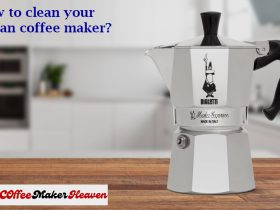
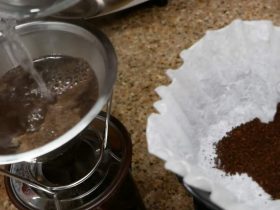
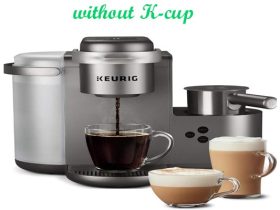
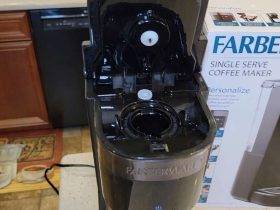



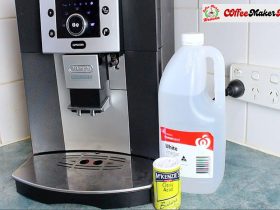

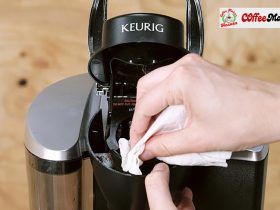
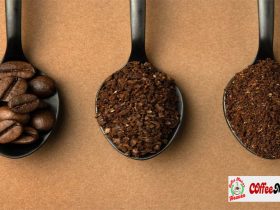

Leave a Reply